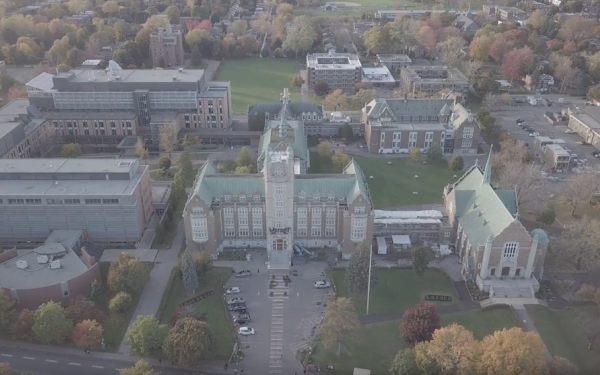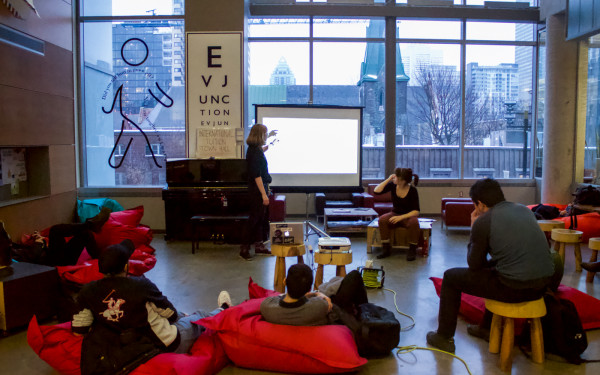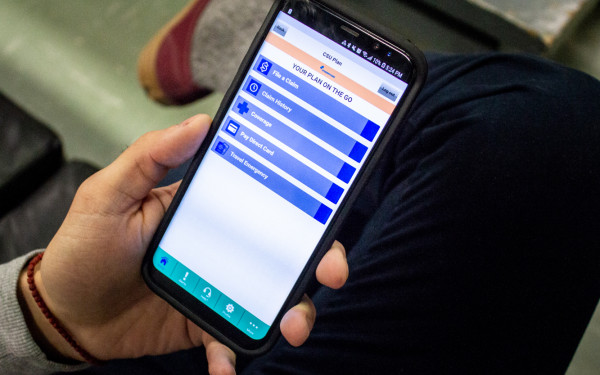Editorial: One Down, 87 To Go
When Asli Isaaq, a Black student and executive of the Concordia Student Union, attempted to attend the launch of the Anti-Black Racism Task Force’s Final Report, she was turned away at the door after being told her name was not on the list of attendees.
This was despite the fact that she was personally invited to the event by the university’s president and provost.
Not even ten minutes after Isaaq was refused entry, two white editors from The Link presented themselves at the ceremony without any accreditation–no press passes, no documentation attesting to a prior invitation were required. Once they announced themselves as media, they were instantly let in—no proof of identification was necessary.
On Oct. 28, the Task Force on Anti-Black Racism published its final report. The 97-page document contains recommendations, denunciations and attempts to reckon with the university’s anti-black past and present.
In an attempt to deliver on the first of the reports’ 88 recommendations, Concordia President Graham Carr apologized for the university’s complicity in the mistreatment and brutalization of Black students during the 1969 computer centre protests.
“Now we begin the hard work of delivering on these recommendations and strengthening our relationships with Black communities, on campus and in Montreal,” Carr told community members—and the cameramen who outnumbered them.
But who was this apology really for? If Black students were barred from the room to witness an apology to their own community, the essence of such an apology is lost, and the first recommendation cannot be delivered on.
Carr, the head of an institution that brutalized Black students, apologized for the “harm” caused by these events, but to simply call it harm is a great disservice.
Reducing the university’s actions and inaction to “harm” trivializes the experiences of students who were imprisoned for weeks and physically assaulted by police. In the aftermath, many found themselves with permanent criminal records, were deported from Canada and continue to endure life-long trauma as a result.
The word “harm” does not convey the fear of being burned alive that dozens of Black students felt following the outbreak of a fire on the ninth floor of the Hall Building in 1969. As the flames climbed higher, slurs were hurled at them in celebration of their potential deaths.
"This chanting of 'Let the n— burn,' you know… They wanted us to die. That you don't forget," said Lynne Murray, one of the Black students arrested by police during the protests, in the 2015 documentary Ninth Floor. Forty-six years between her arrest and her interview for the film, the wounds caused by the chants of the violent white mob remain open.
The most egregious part, or lack thereof, of Concordia’s so-called apology was the omission of the events leading up to the death of 18-year-old Bahamian student Coralee Hutchison. Murray recounted how Hutchison was beaten on the head by police batons, leading to the development of a brain aneurysm. Hutchison eventually died from the consequent brain trauma.
We cannot deny that anti-blackness is rooted in the foundation of Concordia University. Excising it is a herculean task, one that requires more than sitting behind a desk and having a surface-level apology drafted.
It is easy to make considerable promises, but putting in the work needed to accomplish all 88 recommendations requires a serious, genuine commitment to anti-racism within the university's administrative body.
Being performative is simply not nearly enough when addressing such issues. The Task Force has been hard at work for over two years, and the time has now come to implement their recommendations.
One down, 87 to go.
This article originally appeared in Volume 43, Issue 6, published November 8, 2022.

_900_581_90.jpg)
_600_832_s.png)




_600_375_90_s_c1.jpg)